Mastering Microcontroller Power Management Techniques
Category: Embedded Systems
Unlock Efficient Microcontroller Power Management for Your Projects
Whether you're a hobbyist building your first microcontroller gadget, an embedded systems developer optimizing firmware, or a Raspberry Pi enthusiast integrating peripherals, managing power consumption efficiently can make or break your project. You've likely faced the challenges of battery drain, thermal issues, or system instability due to poor power management. Perhaps you've experimented with sleep modes or tried tweaking clock speeds but still struggle to find a comprehensive strategy that balances performance and energy efficiency.
This post dives deep into proven microcontroller power management techniques tailored for creative and technical minds like yours. We won't rehash basic concepts; instead, we focus on actionable insights spanning hardware configurations, software algorithms, and energy-saving modes. We dissect how strategic use of sleep states, clock gating, peripheral management, and voltage scaling can stretch your power budgets and boost system reliability.
Unlike generic overviews, this guide is structured to help you understand not just the 'what,' but the 'why' and 'how' behind each technique with references to programming languages like Python and C/C++ where relevant, perfect for embedded systems projects. If you've come here searching for the best ways to keep your microcontroller-powered devices running longer and smarter, you're in the right place. Let's explore the essential techniques that will elevate both your hobbyist projects and professional designs.
- Unlock Efficient Microcontroller Power Management for Your Projects
- Understanding Power Consumption in Microcontrollers: Key Components and Metrics
- Sleep and Low-Power Modes: Maximizing Efficiency Through System States
- Clock Management Techniques: Dynamic Clock Scaling and Gating
- Voltage Scaling and Regulators: Balancing Performance and Power Use
- Peripheral Power Control: Selective Enabling and Disabling of Hardware Modules
- Software Strategies: Writing Energy-Efficient Embedded Code in C/C++ and Python
- Using Real-Time Operating Systems (RTOS) to Optimize Power Consumption
- Energy Harvesting and Battery Management for Microcontroller Projects
- Practical Examples: Power Management in Raspberry Pi and Common Microcontrollers
- Tools and Debugging Methods for Monitoring and Optimizing Power Usage
Understanding Power Consumption in Microcontrollers: Key Components and Metrics
Before diving into advanced power management techniques, it’s crucial to grasp the fundamental sources of power consumption in microcontrollers and the primary metrics used to evaluate energy efficiency. Microcontrollers consume power mainly through three components: the CPU core, peripherals, and external interfaces. Each has distinct characteristics impacting overall energy usage.
-
CPU Core: The heart of the microcontroller, where logic execution and processing take place. Power usage here depends heavily on clock frequency, operating voltage, and active instruction cycles. Higher clock speeds and voltages increase power draw but yield better performance, whereas lowering these conserves energy at the cost of slower execution.
-
Peripherals: Integrated modules such as ADCs, timers, UART, SPI, and I²C buses significantly affect power consumption based on their enabled states and activity. Disabling or selectively powering down unused peripherals is a fundamental practice in reducing energy footprints.
-
External Interfaces and I/O Pins: Driving LEDs, sensors, and communication lines consumes power through electrical loads and switching activity. Efficient GPIO management, such as configuring unused pins as inputs or outputs with appropriate states, can minimize leakage currents.
Evaluating power consumption requires understanding these key metrics:
- Active Current Consumption (I_active): Current drawn when the microcontroller is running code.
- Sleep Current (I_sleep): Current during low-power or sleep modes.
- Power (P): Calculated as ( P = V \times I ), where ( V ) is operating voltage and ( I ) current.
- Energy per Operation: A measure of how much energy is spent on a single task or instruction cycle.
- Battery Life Estimates: Based on average current consumption and battery capacity, crucial for portable applications.
Being aware of these components and metrics empowers you to make informed decisions about where and how to apply power-saving strategies effectively. In upcoming sections, you'll discover how controlling these variables through clever software and hardware tactics translates into tangible energy savings for your microcontroller projects.
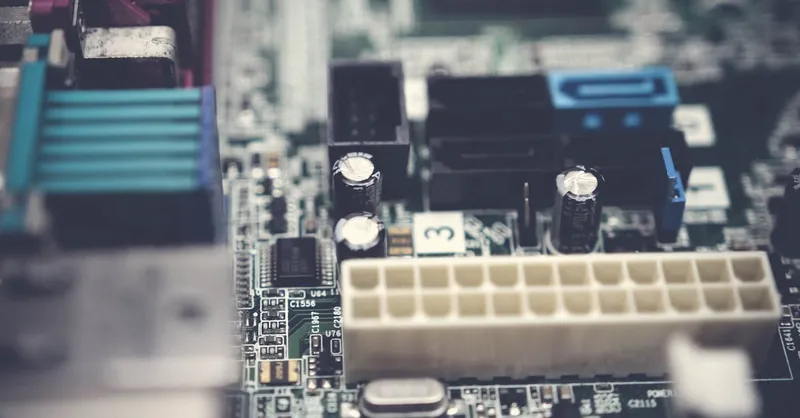
Image courtesy of Pok Rie
Sleep and Low-Power Modes: Maximizing Efficiency Through System States
One of the most effective ways to minimize power consumption in microcontroller projects is leveraging sleep and low-power modes. These modes drastically reduce energy usage by selectively shutting down or throttling various parts of the microcontroller when full processing power is not required. Understanding how to implement and manage these system states can extend battery life significantly and enhance device reliability in embedded applications.
What Are Sleep and Low-Power Modes?
Sleep modes are predefined operational states in a microcontroller where the CPU core either halts instruction execution or runs at a much lower frequency, while selectively disabling or scaling down peripherals. Most modern microcontrollers provide multiple sleep modes—often called Idle, Standby, Stop, or Deep Sleep—each balancing power savings against wake-up latency. For example:
- Idle Mode: CPU clock pauses, but peripherals continue running, enabling quick wake-ups with moderate energy savings.
- Standby/Stop Mode: Core and most peripherals are powered down, sacrificing wake-up speed for deeper power conservation.
- Deep Sleep: Often combined with reduced voltage scaling, achieving the lowest possible current draw but requiring an external event or reset to resume operations.
Why Use Sleep Modes?
By transitioning to these low-power states when your application awaits user input, sensor data, or timed events, you minimize active current consumption (I_active) while maintaining responsiveness. This approach fits perfectly with embedded systems programmed in C/C++ or Python (using MicroPython or CircuitPython), where the firmware can coordinate state transitions via interrupts or timers.
Implementing Sleep Modes in Your Projects
To maximize efficiency through sleep modes, consider these best practices:
- Identify Idle Periods: Profile your code to find when the MCU is waiting or underutilized, then insert appropriate sleep instructions to reduce power.
- Configure Wake-Up Sources: Use interrupts from GPIO pins, timers, or communication peripherals to trigger wake-ups, ensuring responsiveness without continuous polling.
- Manage Peripheral States: Disable unnecessary peripherals before entering sleep to reduce leakage currents and prevent unwanted power draw.
- Optimize Clock Sources: Switch from high-frequency clocks to low-frequency oscillators during sleep modes to minimize energy used by the system clock.
By mastering the interplay between microcontroller sleep states and associated wake-up events, you can engineer projects that run longer on battery power without sacrificing performance or usability. Whether working on a Raspberry Pi Pico, Arduino, or STM32, incorporating these low-power techniques transforms your embedded design into a truly efficient system.
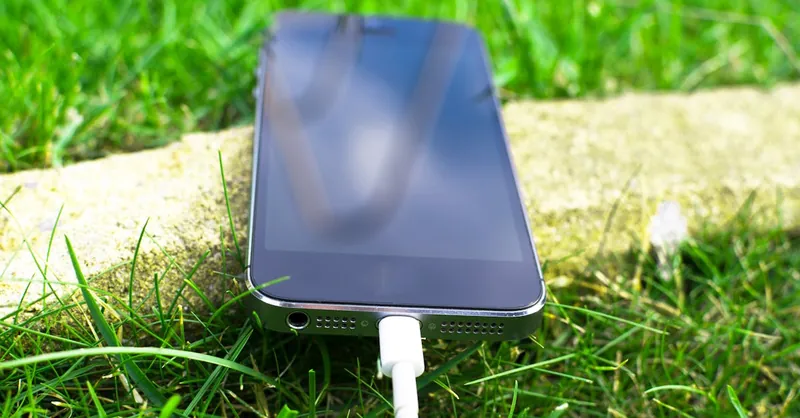
Image courtesy of Lukas
Clock Management Techniques: Dynamic Clock Scaling and Gating
Efficient clock management is a cornerstone of advanced microcontroller power optimization. Since the clock signal drives the CPU and peripherals, regulating its frequency and distribution directly influences both power consumption and system performance. Two essential techniques—Dynamic Clock Scaling (DCS) and Clock Gating—enable you to fine-tune clock usage dynamically, ensuring your embedded system uses only as much power as necessary at any given time.
Dynamic Clock Scaling (DCS)
Dynamic Clock Scaling, also known as Dynamic Frequency Scaling, adjusts the microcontroller’s clock frequency on the fly according to workload demands. Running the CPU at a lower clock frequency reduces switching activity within the silicon, which proportionally decreases power consumption following approximately a linear relationship with frequency.
Key benefits of DCS include:
- Adaptable Performance: Automatically scaling clock frequency in response to computational load allows your code—whether written in C/C++ or Python on frameworks like MicroPython—to balance energy efficiency with necessary processing speed.
- Reduced Power Dissipation: Because dynamic power ( P ) is proportional to frequency (( f )) and voltage squared (( V^2 )), lowering the clock reduces dynamic power draw.
- Thermal Management: Lower clock speeds produce less heat, improving system stability in compact or battery-powered projects.
Implementing DCS often involves integrating firmware routines or RTOS features that monitor processor utilization or task queues, then adjust clock dividers or PLL configurations accordingly. On platforms like STM32 or Raspberry Pi Pico, this might mean programming clock control registers to increase or decrease the CPU frequency dynamically depending on sensor inputs, I/O activity, or processing needs.
Clock Gating
Clock gating goes a step further by selectively disabling the clock signal to specific peripherals or modules when they are idle, rather than reducing the main CPU clock frequency. Because clock transitions drive most of the dynamic power consumption, cutting clocks to inactive sub-systems instantly curtails unnecessary energy usage without impacting active components.
Advantages of clock gating include:
- Fine-Grained Power Control: Unlike global frequency scaling, clock gating targets individual peripherals or buses, allowing critical functions to run uninterrupted while disabling unused hardware blocks.
- Higher Efficiency in Peripheral-Heavy Systems: For projects with multiple modules—like communication interfaces, ADCs, or timers—clock gating can yield significant cumulative savings.
- Seamless Integration: Many modern microcontrollers support hardware clock gating controllable through registers, simplifying programming and lowering firmware complexity.
When implementing clock gating, it’s essential to:
- Identify modules that are idle or not required during specific operation phases.
- Use the microcontroller’s clock enable/disable registers to gate clocks judiciously.
- Ensure that peripherals resume correct operation post wake-up by re-enabling clocks before transactions.
Combining Dynamic Clock Scaling and Clock Gating empowers embedded developers to construct power-aware embedded systems with precision control over the microcontroller’s timing and activity, all while maintaining responsiveness and functionality. Leveraging these techniques in your Raspberry Pi and microcontroller projects can drastically extend battery life and reduce heat generation without compromising performance, making them invaluable tools in your power management toolkit.
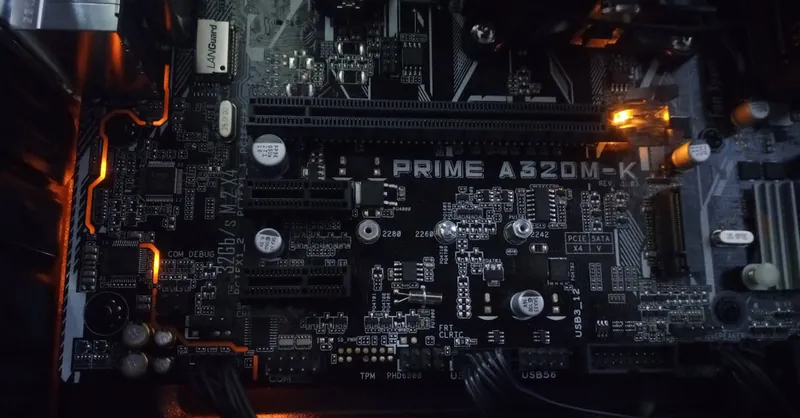
Image courtesy of cyber2120
Voltage Scaling and Regulators: Balancing Performance and Power Use
Effective power management in microcontroller projects often hinges on voltage scaling — adjusting the microcontroller’s core operating voltage to match performance requirements while minimizing energy consumption. Since power dissipation in CMOS circuits is proportional to the square of the supply voltage (( P \propto V^{2} )), even modest reductions in voltage can lead to significant power savings. By optimizing the operating voltage alongside clock frequency (covered previously), you achieve a crucial balance between maintaining system responsiveness and extending battery life.
Why Voltage Scaling Matters
Lowering the supply voltage reduces dynamic power consumption exponentially, but it also impacts maximum achievable clock frequency and system stability. Running at too low a voltage can cause timing errors, decreased noise margins, or even malfunction. Therefore, voltage scaling is often implemented in conjunction with dynamic frequency adjustments via Dynamic Voltage and Frequency Scaling (DVFS), where both voltage and clock frequency are scaled down for light workloads and ramped up when performance spikes.
Voltage Regulators in Microcontroller Designs
Implementing voltage scaling requires precise control over the power supply voltage—this is where voltage regulators come into play. There are two main types relevant to embedded systems:
- Linear Regulators (LDOs): Provide a stable output voltage by dissipating excess voltage as heat. They are simple, low-noise, and cost-effective but less efficient at larger voltage drops, which can affect battery life in high-power applications.
- Switching Regulators (Buck/Boost Converters): Use inductors and switches to efficiently convert voltage levels with minimal energy loss. Switching regulators offer higher efficiency and are ideal for battery-powered or variable-voltage systems, though they introduce switching noise that must be managed.
Best Practices for Voltage Scaling and Regulation
- Match Voltage Rails to Performance Needs: Use adjustable regulators or microcontrollers with built-in voltage scaling features to fine-tune supply voltages dynamically based on workload profiles.
- Coordinate with Clock Management: Integrate voltage scaling alongside clock frequency adjustments to ensure system stability — lowering voltage only when the clock frequency is reduced.
- Monitor System Stability: Implement voltage monitoring and brown-out detection to prevent erratic behavior during voltage scaling transitions.
- Optimize Firmware for DVFS: Program your embedded system firmware (in C/C++ or Python when using MicroPython) to include adaptive voltage and frequency control loops triggered by system load or sensor inputs.
Incorporating voltage scaling and advanced regulator selection into your microcontroller projects not only enhances energy efficiency but also reduces heat generation and extends component longevity. For Raspberry Pi-based systems and standalone microcontrollers alike, mastering voltage scaling is a pivotal step towards designing truly power-optimized embedded solutions.
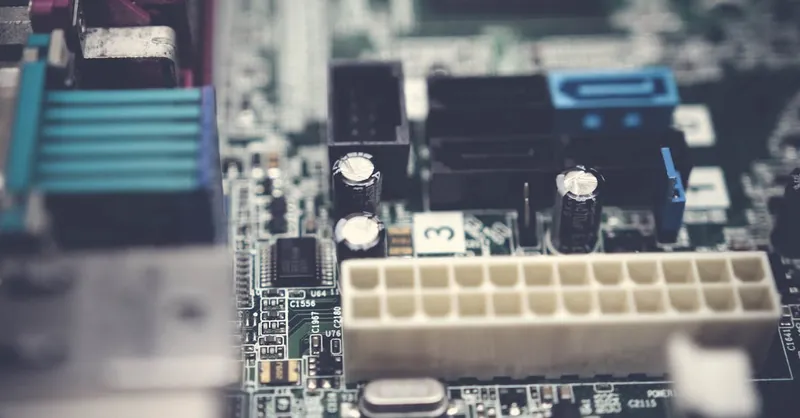
Image courtesy of Pok Rie
Peripheral Power Control: Selective Enabling and Disabling of Hardware Modules
A critical yet often overlooked technique in microcontroller power management is peripheral power control, which involves selectively enabling and disabling hardware modules based on runtime requirements. Most microcontrollers integrate a variety of peripherals—such as UARTs, ADCs, PWM timers, SPI/I²C buses, and watchdog timers—that consume energy even when idle if left powered. By implementing precise control over these modules, you can drastically reduce overall current consumption without affecting core functionality.
Why Peripheral Power Control Matters
Peripherals contribute significantly to the microcontroller’s total power budget, especially in complex embedded designs or battery-powered applications where every microampere counts. Since many peripherals remain active unless explicitly disabled, unnecessary power draw accumulates over time, reducing battery life and increasing thermal load. Efficient peripheral power management ensures that only those modules needed for a given operation phase consume energy, directly supporting extended uptime and improved system efficiency.
Implementing Peripheral Power Control in Embedded Systems
Most modern microcontrollers expose clock gating registers or peripheral enable bits that allow firmware—whether written in C/C++ or Python (using MicroPython)—to dynamically control peripheral states. Best practices include:
- Audit Peripheral Usage: Regularly review which hardware modules your application actively uses during different operational modes to identify candidate peripherals for disabling.
- Utilize Microcontroller-Specific Registers: Access peripheral enable/disable registers or use power domains where available to gate clocks or power supplies to specific blocks.
- Coordinate with Sleep and Clock Management: Before entering low-power or sleep modes, turn off peripherals that won’t be needed upon wake-up, further amplifying power savings.
- Re-enable on Demand: Ensure peripherals are safely re-initialized and re-enabled prior to use to maintain system stability and data integrity.
For example, when working on a Raspberry Pi Pico (RP2040), disabling unused UARTs or SPI controllers via the CLOCK->ENABLE registers can reduce dynamic power significantly. On STM32 microcontrollers, the RCC (Reset and Clock Control) registers provide granular peripheral clock gating features.
Benefits of Peripheral Power Control
- Drastic Reduction in Idle Power Draw: By cutting clocks and power to inactive modules, you eliminate needless switching and leakage currents.
- Enhanced Battery Life: Especially vital for remote sensors, wearables, or portable instruments relying on small batteries — peripheral power control can extend operational time by orders of magnitude.
- Improved Thermal Profile: Lower power consumption translates to less heat generation, creating more reliable and longer-lasting hardware.
- Fine-Grained Control for Complex Systems: When combined with clock gating and dynamic frequency management, peripheral power control completes a holistic approach to optimizing embedded system power.
In summary, peripheral power control is an indispensable strategy for any embedded developer or Raspberry Pi enthusiast striving for power-efficient microcontroller projects. Mastering this technique allows you to tailor system energy usage tightly to real workload demands, balancing functionality with extended battery life and system reliability.
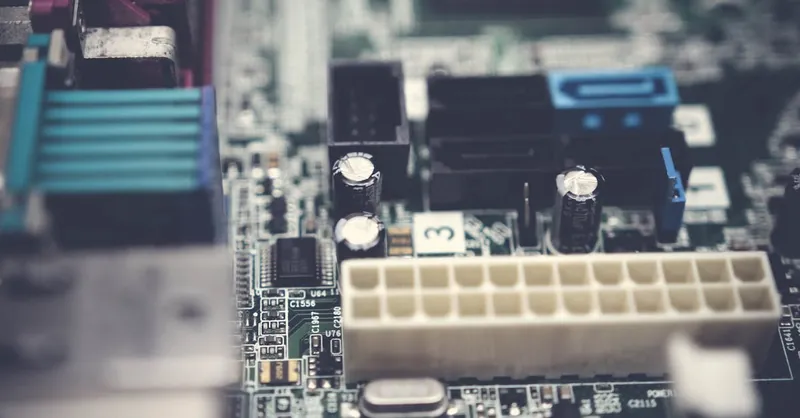
Image courtesy of Pok Rie
Software Strategies: Writing Energy-Efficient Embedded Code in C/C++ and Python
Optimizing power consumption in microcontroller projects isn't limited to hardware tricks—software plays a pivotal role in managing energy use effectively. Writing energy-efficient embedded code in languages like C/C++ and Python (MicroPython or CircuitPython) requires mindful programming practices that minimize CPU active time, reduce unnecessary wake-ups, and leverage the platform’s low-power features strategically.
Key Software Techniques for Energy Efficiency
-
Minimize Busy-Wait Loops and Polling: Continuously polling peripherals or flags consumes CPU cycles and prevents the microcontroller from entering sleep modes. Instead, rely on interrupt-driven programming to respond only when necessary, allowing the CPU to sleep and conserve power.
-
Optimize Algorithmic Efficiency: Write lean, efficient algorithms that reduce instruction cycles and execution time. In C/C++, use optimized data structures and avoid heavy floating-point operations if possible. In Python, prefer built-in functions and native modules over slow, interpreted loops to speed execution and reduce active power duration.
-
Leverage Hardware Timers and Event Triggers: Offload timing and repetitive tasks to hardware peripherals instead of software loops. Using timers or DMA (Direct Memory Access) decreases CPU intervention, enabling longer periods in low-power states.
-
Manage Peripheral Configuration Wisely: Software should initialize peripherals only when needed and deactivate them promptly afterward. Keep peripherals in low-power modes via firmware commands, particularly in Python where abstractions sometimes obscure hardware states.
-
Implement Dynamic Task Scheduling: When using RTOS or firmware schedulers, design tasks to batch work and maximize idle times. Grouping operations reduces frequent wake-ups, helping the microcontroller stay in low-power modes longer.
Language-Specific Considerations
-
C/C++: These languages offer direct access to microcontroller registers and optimized control of power modes. Use inline assembly when necessary for time-critical low-power instructions like
WFI(Wait-For-Interrupt) or to manipulate clock and power registers efficiently. Compile with optimization flags (-O2or-Os) to reduce binary size and execution time. -
Python (MicroPython / CircuitPython): Although interpreted, Python on embedded systems has features like
machine.sleep(),machine.idle(), or peripheral-specific power commands that enable low-power states. To improve efficiency: - Avoid frequent allocations or garbage collection during critical low-power operation.
- Use callbacks and hardware interrupts instead of polling loops.
- Profile scripts to identify bottlenecks and offload heavy lifting to C modules if supported.
By combining interrupt-driven design, efficient algorithms, and peripheral-aware firmware, embedded developers ensure their microcontroller applications achieve significant power savings without sacrificing responsiveness or functionality. Writing energy-conscious software is an indispensable complement to hardware techniques like clock gating, voltage scaling, and peripheral control, driving your Raspberry Pi and microcontroller projects toward maximum efficiency and longevity.
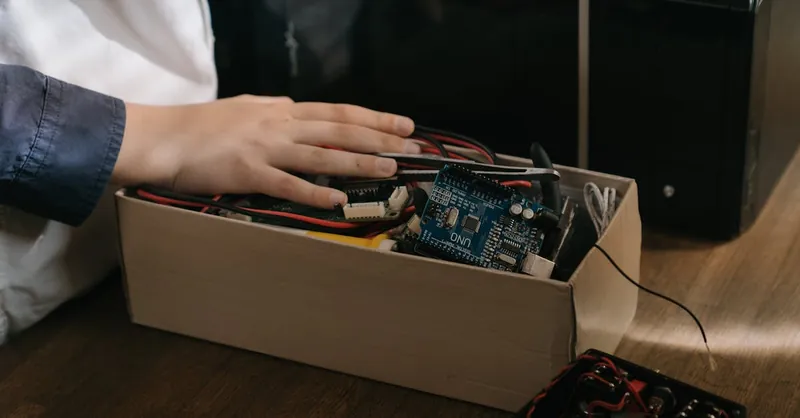
Image courtesy of cottonbro studio
Using Real-Time Operating Systems (RTOS) to Optimize Power Consumption
Incorporating a Real-Time Operating System (RTOS) into your microcontroller projects can dramatically enhance power management by providing precise control over task scheduling, system states, and peripheral usage. An RTOS enables efficient energy optimization strategies that go beyond simple sleep modes by intelligently managing CPU activity and orchestrating workload to minimize power draw without compromising the responsiveness and determinism required in embedded applications.
How RTOS Improves Power Efficiency
Traditional bare-metal firmware often relies on polling or fixed delay loops, which can keep the CPU active unnecessarily, leading to higher energy consumption. An RTOS introduces features such as:
- Preemptive Multitasking: Allocates CPU time only to active tasks needing processing, allowing idle periods to be utilized effectively for low-power sleep modes.
- Tickless Idle Mode: Many RTOS kernels support “tickless” operation—where the periodic system timer tick is suspended during idle periods—reducing wake-up frequency and enabling the microcontroller to remain in deep sleep states longer.
- Dynamic Task Prioritization: Enables prioritizing tasks based on real-time criteria, ensuring that critical operations run promptly while less urgent tasks run only when system resources permit, reducing unnecessary power usage.
- Peripheral Event Control: RTOS APIs often provide hooks to manage peripherals and synchronize them with task states, allowing selective power gating and coordinated wake-up triggers.
Implementing Power-Aware RTOS Scheduling
To maximize power savings with an RTOS in your embedded projects programmed in C/C++ or MicroPython-compatible platforms, adopt the following practices:
- Design Idle Hooks: Implement the RTOS idle task to execute low-power instructions such as
WFI(Wait-For-Interrupt), which halts the CPU until external events occur. - Use Event-Driven Tasks: Structure application logic around event signals instead of tight loops, enabling the scheduler to place the processor into sleep states intelligently.
- Leverage Timeouts and Delays: Employ RTOS delay mechanisms that integrate with low-power timers allowing the MCU to sleep without busy-waiting.
- Monitor and Tune Task Stack and CPU Load: Keeping task stack sizes minimal and optimizing CPU utilization leads to more frequent and longer sleep intervals.
Popular embedded RTOS options like FreeRTOS, Zephyr, and Mbed OS come equipped with built-in low-power support tailored for microcontrollers including Raspberry Pi Pico, STM32, and ESP32 families. Their power management frameworks allow developers to seamlessly integrate hardware sleep modes with task scheduling and peripheral control, streamlining energy-efficient design.
Benefits of RTOS-Based Power Management
- Improved Battery Life: By reducing active CPU time and maximizing deep sleep state durations based on real workload demands.
- Enhanced System Responsiveness: Quick wake-up and task switching keep performance high without wasting power.
- Scalable Solution for Complex Applications: RTOS facilitates managing multiple peripherals and concurrent tasks while minimizing energy footprints.
- Simplifies Power-Aware Firmware Development: Abstracts complex low-power transitions into manageable APIs, reducing code complexity and bugs related to manual power state management.
Leveraging an RTOS in your embedded projects offers a sophisticated yet practical approach to microcontroller power management that aligns well with professional-grade designs and creative Raspberry Pi applications alike. Integrating RTOS-powered power optimization techniques ensures you extract every milliwatt of efficiency, extending the operational longevity of your battery-powered or energy-sensitive embedded systems.

Image courtesy of Connor McManus
Energy Harvesting and Battery Management for Microcontroller Projects
Incorporating energy harvesting and effective battery management strategies is a game-changer for extending the autonomy and sustainability of microcontroller-based systems, especially in portable or remote applications. Energy harvesting leverages ambient energy sources—like solar, thermal gradients, vibration, or RF signals—to replenish power supplies, reducing reliance on traditional batteries and enabling near-perpetual operation for low-power embedded devices.
Integrating Energy Harvesting into Your Projects
Microcontrollers, including popular platforms like the Raspberry Pi Pico and STM32 series, can be paired with energy harvesting modules that convert environmental energy into electrical power. Key considerations for integration include:
- Selecting Suitable Energy Sources: Choose harvesters based on your project's environment—for example, photovoltaic panels for outdoor sensors or piezoelectric elements for motion-powered wearables.
- Power Conditioning Circuits: Incorporate DC-DC converters and maximum power point tracking (MPPT) controllers to optimize the harvested energy before feeding it to the microcontroller or battery systems.
- Energy Storage Elements: Use supercapacitors or rechargeable batteries to buffer intermittent harvesting, ensuring stable and continuous microcontroller operation.
- Firmware Adaptation: Program your microcontroller firmware (in C/C++ or Python) to monitor available energy and adjust system behavior accordingly, such as reducing sampling rates or entering deeper sleep modes during low energy availability.
Best Practices in Battery Management
To maximize operational lifetime and reliability, battery management systems (BMS) are essential for efficient power regulation, protection, and longevity:
- Battery Selection: Match battery chemistry (Li-ion, NiMH, LiFePO4) and capacity to your power profile and project requirements.
- Charge Controllers: Implement intelligent charging circuits supporting safe charge cycles, temperature monitoring, and overcharge/overdischarge protection.
- Fuel Gauging and State-of-Charge (SoC) Monitoring: Integrate software and hardware solutions to accurately predict remaining battery life and inform power management decisions.
- Load Regulation and Power Path Management: Use regulators and power switches that prioritize energy flow from harvesters or batteries to the microcontroller, minimizing losses.
By combining energy harvesting techniques with robust battery management, your embedded designs can achieve outstanding energy autonomy and sustainability. This synergy empowers Raspberry Pi and microcontroller projects to operate longer in the field with minimal maintenance, unlocking possibilities for innovative IoT devices, environmental monitoring systems, and wearable technologies that capitalize on ambient energy while intelligently managing stored power.

Image courtesy of Kindel Media
Practical Examples: Power Management in Raspberry Pi and Common Microcontrollers
Understanding theoretical power management concepts is essential, but applying them effectively in real-world projects is what truly elevates your embedded designs. Here, we examine practical examples of power optimization techniques tailored for popular platforms like the Raspberry Pi Pico (RP2040), Arduino Uno (ATmega328P), and STM32 microcontrollers, demonstrating how to combine hardware capabilities and software strategies to achieve substantial energy savings.
Raspberry Pi Pico (RP2040)
The RP2040’s dual-core Cortex-M0+ processors feature multiple sleep modes and flexible clock controls enabling precise power management. To optimize your Pico projects:
- Use Sleep and Dormant Modes: The Pico SDK provides functions for putting cores into dormant mode, which halts execution while retaining RAM contents, achieving microampere-level current draw.
- Disable Unused Peripherals: Turn off USB and other interfaces when not in use via control registers to reduce power drain.
- Dynamic Clock Scaling: Adjust the system clock frequency through the SDK’s clock APIs based on workload, lowering clock speed during idle or background tasks.
- Program Low-Power States in C/C++: Utilize the
sleep_ms()andsleep_us()functions for precise timing and enter low-power states between sensor readings or communications.
Arduino Uno (ATmega328P)
Although the ATmega328P is a simpler 8-bit microcontroller, it offers powerful low-power modes accessible through direct register manipulation or with libraries like LowPower.h:
- Sleep Modes Implementation: Use Power-down mode for deepest sleep; the CPU halts but can wake on external interrupts or watchdog timer events.
- Peripheral Disabling: Manually disable ADC, timers, and communication interfaces when idle by clearing the power reduction registers (
PRR). - Watchdog Timer as Wake-up Source: Utilize the watchdog timer to wake the MCU periodically to perform tasks, then return to sleep quickly, minimizing active current.
- Sample Code Pattern (C++):
```cpp
#include
void loop() { // Perform sensor reading readSensors(); // Enter power-down sleep for 8 seconds LowPower.powerDown(SLEEP_8S, ADC_OFF, BOD_OFF); } ``` This pattern drastically extends battery life in simple Arduino-based sensors or wearables by reducing CPU uptime and peripheral activity.
STM32 Microcontrollers
STM32 MCUs, such as the popular STM32F4 series, provide sophisticated power management units (PMU) with multiple low-power modes and rich peripheral gating options:
- Standby and Stop Modes: These deep-sleep states can reduce current consumption to microamperes, retaining SRAM and register contents.
- Dynamic Voltage and Frequency Scaling (DVFS): Utilize the STM32's Power Control (PWR) and Clock Control (RCC) modules to scale core voltage and adjust clock trees dynamically at runtime.
- Use HAL and LL Libraries: STM32’s Hardware Abstraction Layer (HAL) and Low-Layer (LL) APIs provide intuitive functions to enter low-power modes and manage peripheral clocks efficiently.
- Interrupt-Driven Wake-Up: Configure external pins or internal timers as wake-up sources to ensure responsive yet energy-conscious operation.
- Power Profiling: Take advantage of STM32CubeMonitor-Power to measure and profile power usage live, fine-tuning firmware behavior.
Tips for Cross-Platform Power Optimization
- Profile Your Application: Use power analyzers or built-in MCU peripherals to measure consumption and identify hotspots.
- Match Sleep Modes to Use Cases: Choose the lightest sleep state that meets your latency and data retention needs.
- Control Peripheral Clocks Dynamically: Enable clocks only during active use; disable immediately afterward.
- Implement Interrupt-Driven Workflows: Avoid polling loops in favor of event-based designs to maximize time spent in low-power modes.
- Consider Hardware Limitations: Not all power modes retain RAM or peripheral states—plan firmware to handle states accordingly.
By applying these practical techniques and tailoring them to the unique capabilities of your microcontroller platform, you unlock powerful power management possibilities. Whether programming in C/C++ or Python-based environments like MicroPython, integrating these methods will ensure your Raspberry Pi and embedded systems projects run longer, cooler, and more reliably under diverse conditions.
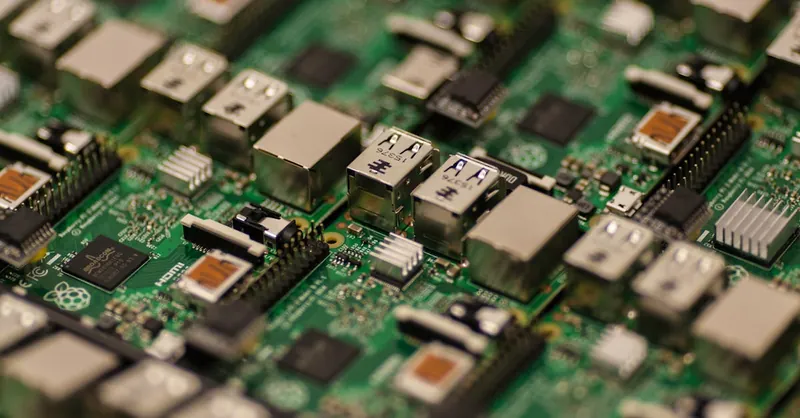
Image courtesy of Craig Dennis
Tools and Debugging Methods for Monitoring and Optimizing Power Usage
To achieve effective microcontroller power management, it's essential to leverage specialized tools and debugging methods that provide real-time insights into your system's energy consumption. Without accurate measurement and profiling, optimizing power usage becomes guesswork, compromising both the reliability and longevity of your embedded projects. Luckily, the ecosystem surrounding platforms like Raspberry Pi and various microcontrollers offers an array of hardware and software solutions designed to monitor, analyze, and optimize power behavior with precision.
Essential Tools for Power Monitoring
- Current and Voltage Measurement Hardware:
- Precision Multimeters: Basic but vital tools for spot-checking current draw and voltage levels, useful during initial prototype tuning.
- Current Sense Amplifiers and Shunt Resistors: Incorporate these in your PCB design or test setup to measure current precisely, especially in microampere ranges common in sleep modes.
-
Power Analyzers: Devices like the Otii Arc, Monsoon Power Monitor, or Nordic Power Profiler Kit offer high-resolution recording of voltage, current, and power consumption over time, enabling detailed usage profiling during various operational states.
-
Oscilloscopes and Logic Analyzers:
Useful for correlating power events with device activity, these tools help identify unexpected power spikes caused by firmware bugs or peripheral misconfigurations. -
On-Board MCU Debug Features:
Many microcontrollers provide built-in power measurement peripherals or energy monitoring units accessible via registers or dedicated hardware blocks. Leveraging these allows firmware-driven power profiling without external equipment.
Software and Debugging Strategies
-
Integrated Development Environment (IDE) Plugins and Extensions: Many microcontroller IDEs—such as STM32CubeIDE, MPLAB X, or Arduino IDE—support plugins that interface with hardware power analyzers, displaying live current and voltage graphs during debugging sessions.
-
Profiling Firmware Functions: Embed timing and activity counters in your C/C++ or Python code to correlate specific operations with energy use. Functions like toggling GPIO pins at known points let you synchronize power traces with code execution flow.
-
Statistical and Historical Data Logging: Implement low-overhead data logging of power states and transitions within firmware to identify patterns leading to excessive consumption, enabling iterative optimization.
-
Simulation and Modeling Tools: Utilize power estimation features in software tools like STM32CubeMX, Percepio Tracealyzer, or EnergyAware Profiler to predict consumption based on clock, voltage, and peripheral settings before deploying code to hardware.
Best Practices for Power Debugging and Optimization
-
Profile Under Real-World Conditions: Test your microcontroller system in typical operational environments, accounting for temperature, load, and supply variations that affect power behavior.
-
Isolate Power Domains: When possible, monitor subsystems independently to pinpoint major contributors to power usage.
-
Iterative Refinement: Use your measurement data to guide incremental firmware changes, progressively reducing active time, disabling peripherals, or tweaking clock/voltage parameters.
-
Automate Testing and Logging: Integrate power monitoring into your continuous integration environment if developing large-scale or production-level devices, ensuring power budgets remain controlled across firmware updates.
By incorporating these power measurement tools and debugging techniques into your development workflow, you gain the visibility and data-driven insight necessary to perfect your embedded system’s energy profile. Optimizing power usage is no longer a black box process—it becomes a precise engineering discipline that enhances the reliability, usability, and sustainability of your Raspberry Pi and microcontroller projects.

Image courtesy of Connor McManus
